Preservation of goods
Instructions on how to harvest and store avocados for a long time effectively
Avocado is a tropical fruit, most varieties are oval in shape and have green skin, turning purple when ripe (some varieties remain green).
They are one of the few fruits that contain significant amounts of oil (fatty acids).
Some typical avocado varieties in our country are very popular: wax avocado, hass avocado, booth avocado, four-season avocado, 034 avocado, reed avocado, fuerte avocado…
Avocado has a relatively short shelf life, due to the characteristics of the fruit, as well as the storage environment.
Characteristic Issues Are Challenging Avocados to Go Far
Avocado is susceptible to postharvest diseases, especially anthracnose (Colletotrichum gloesporioides) and crown rot.
In addition, during storage and transportation, the fruit is susceptible to cold damage, causing pitted and blackened skin, gray flesh, browning of blood vessels, and rapid softening of the fruit.
Harvesting Avocados Correctly
1. How to Assess Whether an Avocado is Ripe or Not?
The harvest time of avocados is up to 8 months. Harvesting depends on the type of avocado and the growing area.
For example, Hass avocados are a popular variety grown today, usually harvested in May (about 8 months from flowering to harvest). If there is any change, it depends largely on the weather, fertilization, etc.
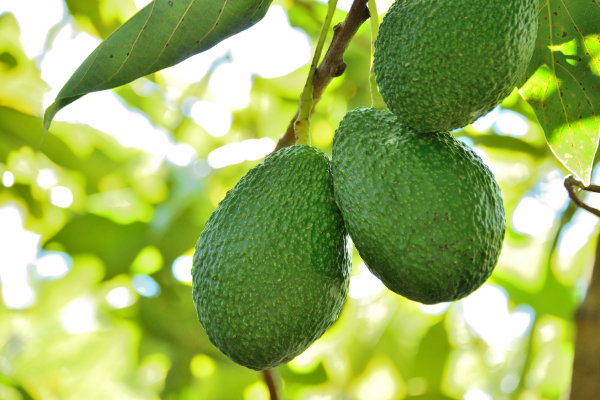
When some of the fruit has ripened, growers begin picking the avocados. This is not a reliable way to judge whether an avocado is ripe, because avocados have a long flowering period, resulting in different stages of maturity for the tree.
When picking avocados, we choose the larger ones because they tend to ripen the earliest. These avocados will ripen in one to two weeks at room temperature after picking.
How to judge a mature avocado: Avocados are unique in that they do not mature on the tree.
In fact, if you’re not ready to harvest them, the best place to store them is hanging from a tree.
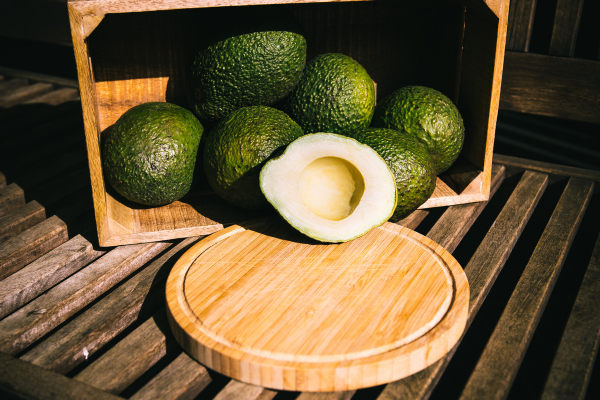
Ripe avocados have uniformly soft flesh, which is the best indicator of ripeness. Depending on the variety, the skin can range from yellowish green to reddish purple to nearly black, so skin color is not a good indicator of ripeness.
For example, a Hass avocado starts out bright green, gradually turning pebble-colored and purplish-black. The color change doesn’t necessarily mean the avocado is ripe, but it is a clue.
2. The Best Time to Harvest Avocados
The longer the fruit is on the tree, the higher the oil content and the richer the flavor, if left too long the oil will spoil.
The best way to determine if a fruit is ready to harvest is to select a large, dark avocado, place it on the counter at room temperature, and either let it ripen or speed up the ripening process by placing it in a paper bag.
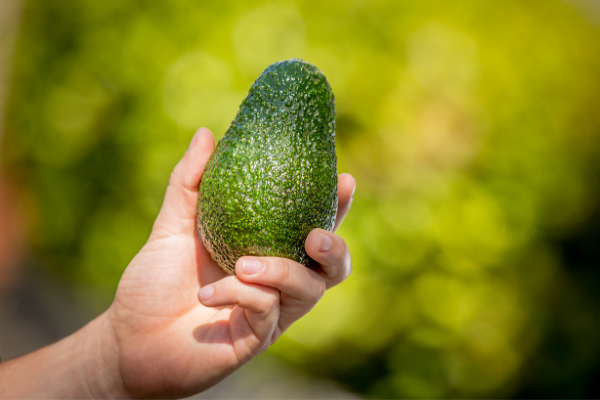
The release of ethylene gas from fruit speeds up the ripening process.
You can speed up the ripening process with bananas or apples, which also emit ethylene gas. However, if you are doing this on a large scale, you can use ethephon packets to safely ripen fruit or an ethanol ripener to produce ethylene gas in large quantities and ripen avocados more evenly.
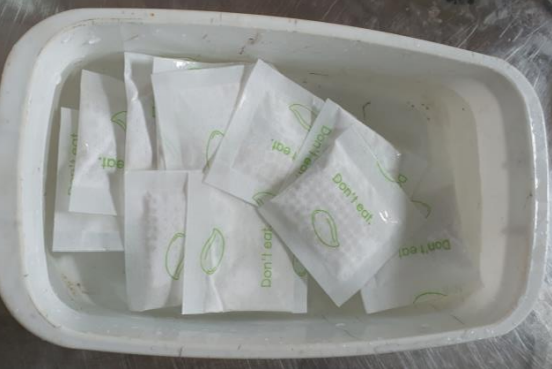
The fruit will soften in a week or two, indicating that the other avocados are ready to harvest.
If it shrinks or remains rubbery, be patient and leave the fruit on the tree for a while.
You may need to check this several times until the fruit reaches its peak harvest, but a few lost fruits are a small price to pay for dozens of perfectly ripe avocados.
In summary, avocado harvest depends on variety, color, size and firmness.
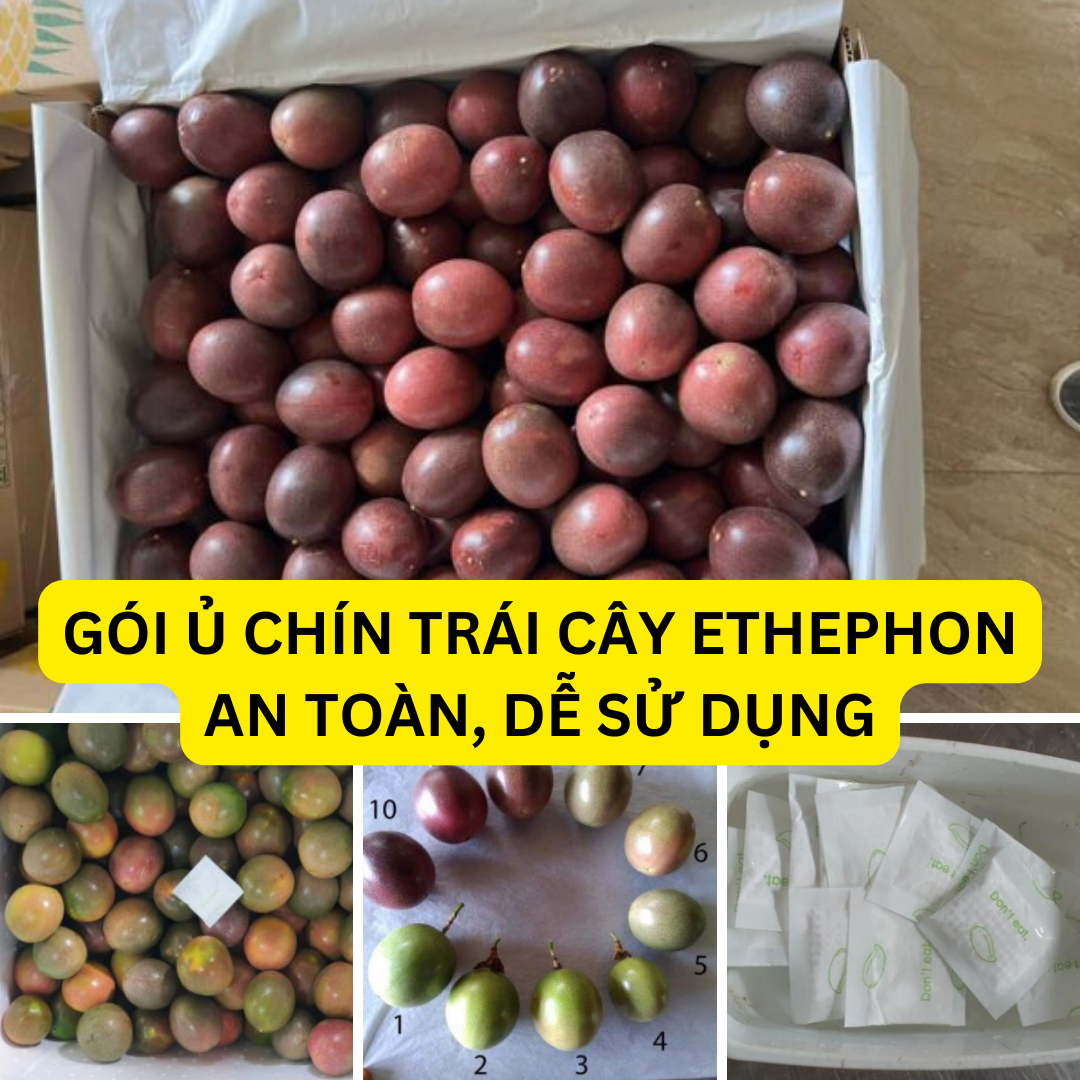
>>> See More: Ethephon Safe Fruit Ripening Agent
How to Process Avocados After Harvest to Reduce Damage to Export Standards
1. Cold Treatment
It is important to cool avocados before storing them at low temperatures, otherwise they will seriously affect their shelf life. Avocados tend to maintain a high ‘field temperature’ when harvested.
Physiological activities such as breathing and metabolism are vigorous. It is very easy to ripen naturally.
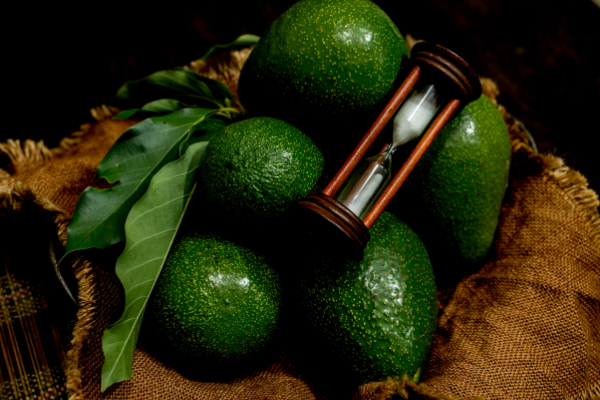
At the same time, if we do not cool the avocado before putting it into cold storage, the temperature difference between the inside and outside of 20 ° C will disrupt the physiological activity of the fruit, causing excessive damage and water condensation on the surface of the fruit.
Increases the chance of pathogen invasion.
2. Sterilizing and Preserving Avocados
Fungi cause most postharvest rots. Until recently, the main method of controlling postharvest diseases in fruits was the use of chemical fungicides.
Fungicides used to treat avocado disease are Tecto, Benzite, … and the concentration is usually 0.1%.
After treating the fruit with 0.2% imiamide or 0.05% benzoate + 0.05% imidate, we can store it at 13 ° C for 16 days.
Additionally, treatment of avocado fruit with wax containing 0.4% bisphenol and/or 0.1% benomyl can reduce postharvest disease and extend shelf life by 2 to 3 days.
Low concentrations (0.1%) of the protectant can effectively control postharvest decay of Hass avocado.
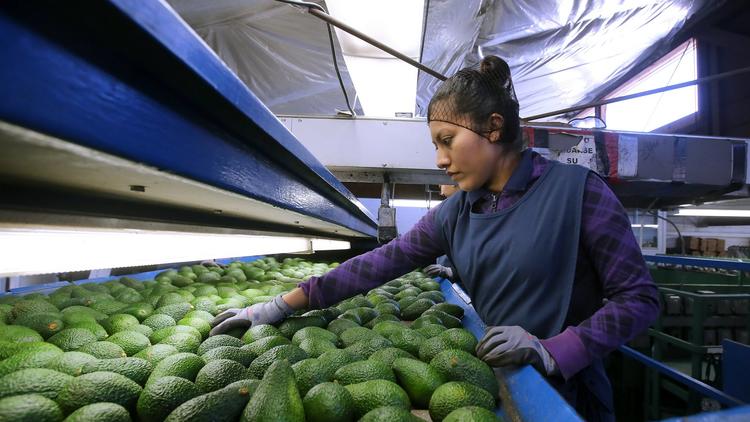
Although the use of avocado preservatives is highly effective in protecting against fungi and harmful microorganisms, it negatively affects the health of consumers.
Therefore, we recommend that you use Natacoat, a preparation that effectively inhibits natural fungi (blue, black, white mold, etc.), formulated with Natamycin extracted in rubber latex solution.
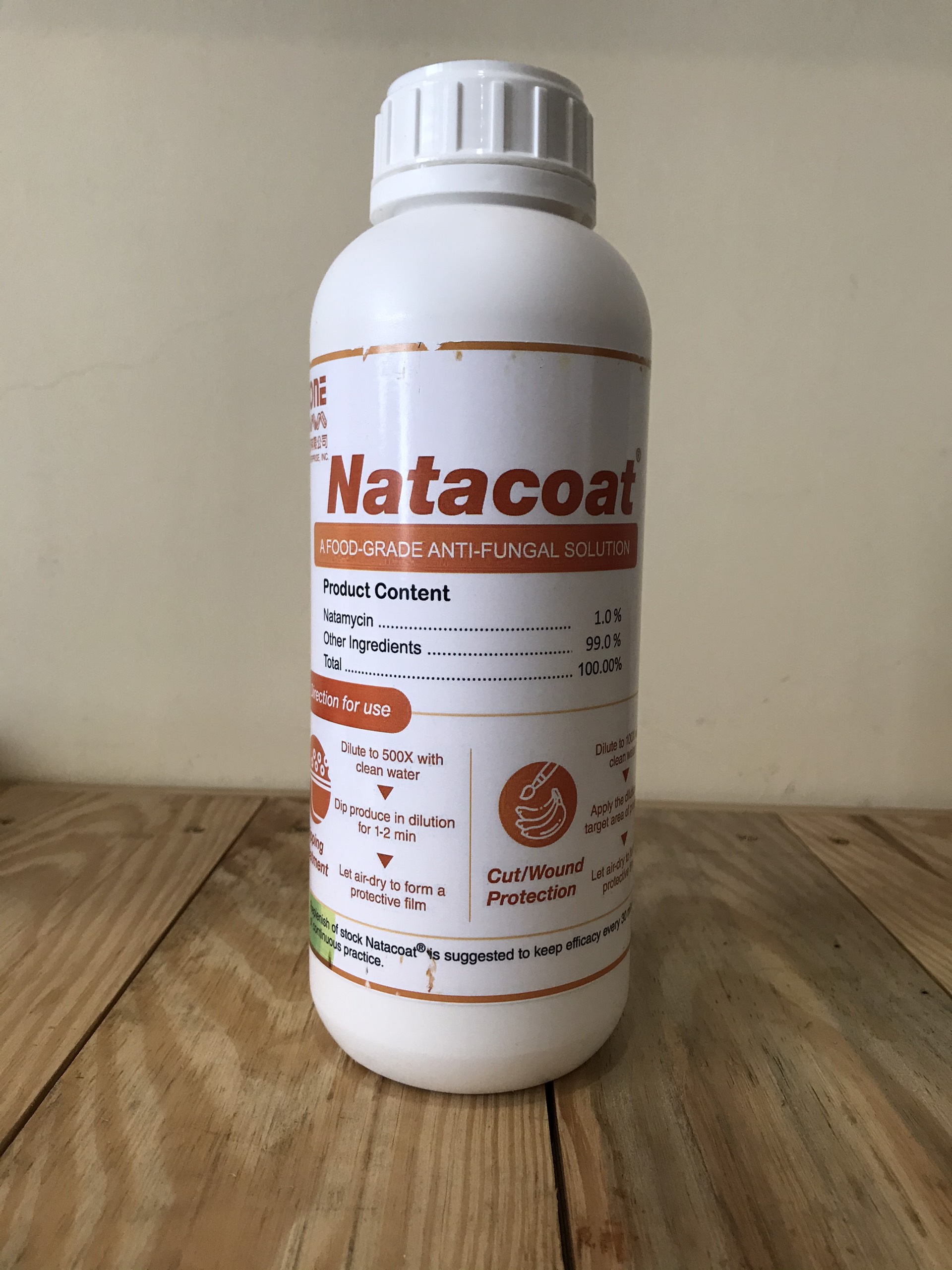
When used it creates a protective film on the outside of the fruit, thereby inhibiting the growth of various fungi, which are contaminated during production and harvesting.
Also, limit water loss during storage.
Ways to Preserve Avocados for Long-Term Export
1. How to Preserve Avocado Using Heat Treatment
Heat treatment can effectively prevent avocado from rotting and prolong the storage period of avocado.
Hass avocados were soaked in 50°C hot water for 5 minutes after harvest. It can reduce rotting at room temperature and after ripening.
Postharvest heat treatment has a clear effect in reducing external chilling damage of avocados under low temperature storage conditions.
Avocado fruit was treated with hot air at 38 °C for 3, 6, or 10 hours, followed by hot air treatment at 40 °C for 0.5 hours. It can reduce the degree of cold damage on the surface of fruit stored at 2 °C.

Before hot water treatment of Hass avocado at 50°C, please treat with hot air at 38°C for 60 minutes.
The method can reduce the browning of the surface most effectively. It also reduces the hardness of the epidermis caused by the ripening of the avocado during the hot water treatment.
During storage and sales, heat treatment can inhibit fruit ripening and induce disease resistance, thus reducing the incidence of postharvest rot.
Before long-term storage at low temperature of 3 to 7 ° C, it is recommended to use 50 ° C hot water treatment (5 minutes) to reduce damage caused by external cold.
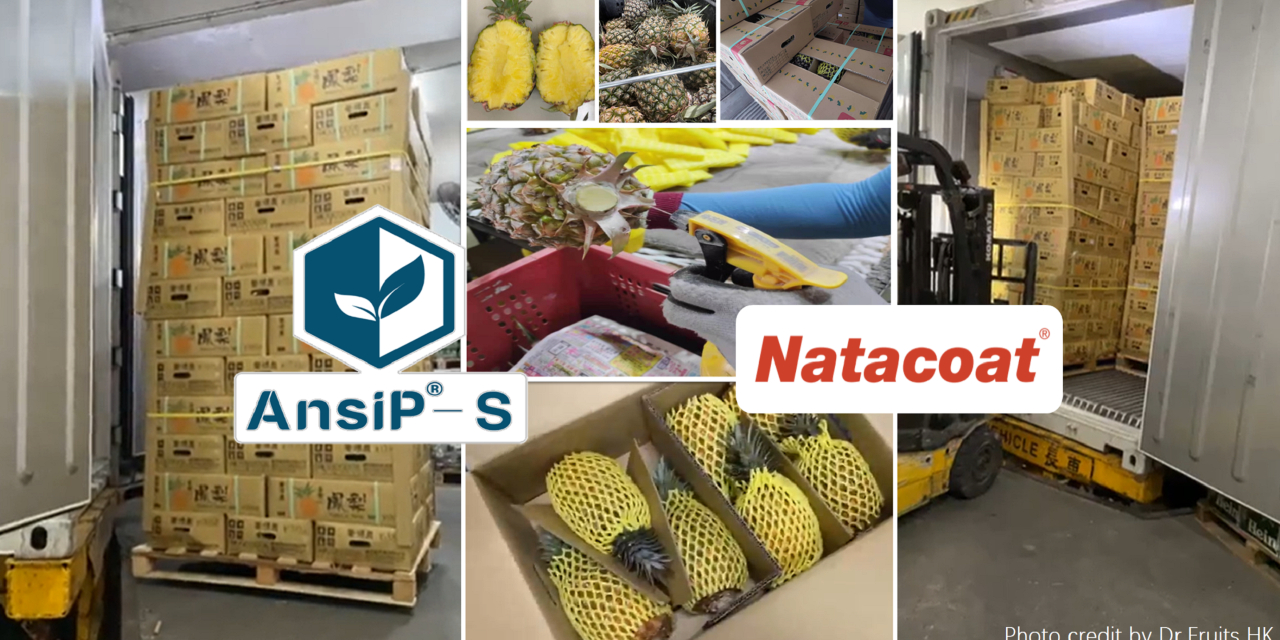
2. Preserving Avocado Using 1-MCP Effectively For Export
AnsiP 1-MCP inhibits ethylene by blocking receptors on vegetables, fruits and flowers, preventing them from absorbing or releasing ethylene, slowing down the natural ripening and aging process.
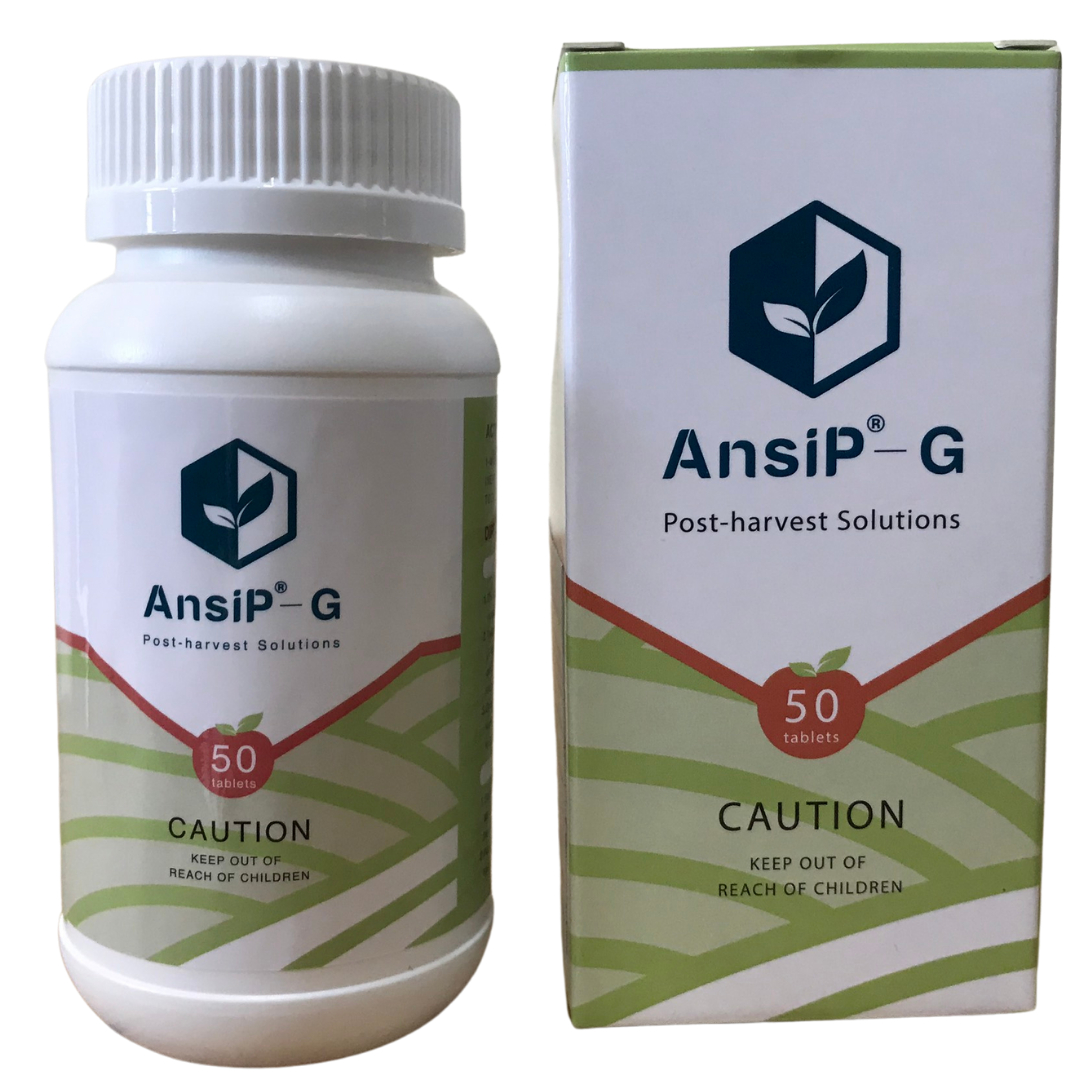
Use by dissolving in water with appropriate dosage, to control the 1-Methylcyclopropene substrate compressed inside will disperse within a certain range, in airtight cold storage.
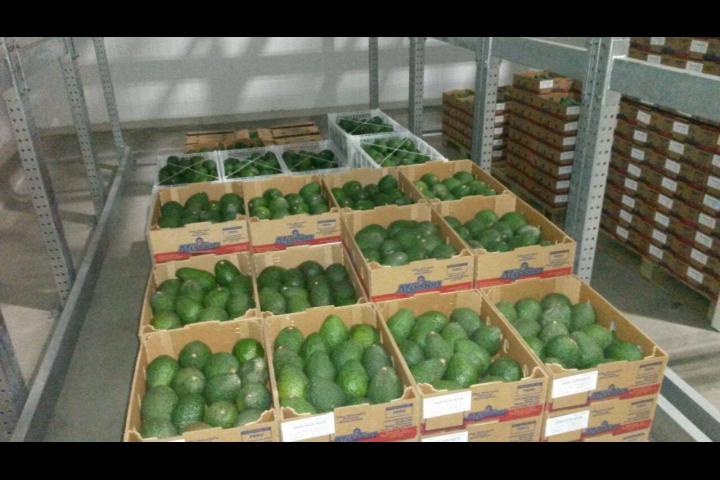
Note: Various uses can be customized depending on the type of fruit and storage conditions.
3. How to Preserve Avocados from Turning Black and Ripening for a Long Time Using the Modified Atmosphere Method (GreenMap Bag or MAP Bag)
Avocados typically maintain a high ‘field temperature’ when harvested. Physiological activities such as breathing and metabolism are intense. They ripen very easily naturally.
[Result] Preserving Avocado with MAP KIF Bags AFTER 40 Days
Using CA method, reduce O2 concentration and increase CO2 concentration in the storage environment to inhibit respiration, reduce the consumption of nutrients of avocado. It is necessary to delay the maturity and aging of avocado to extend the shelf life.
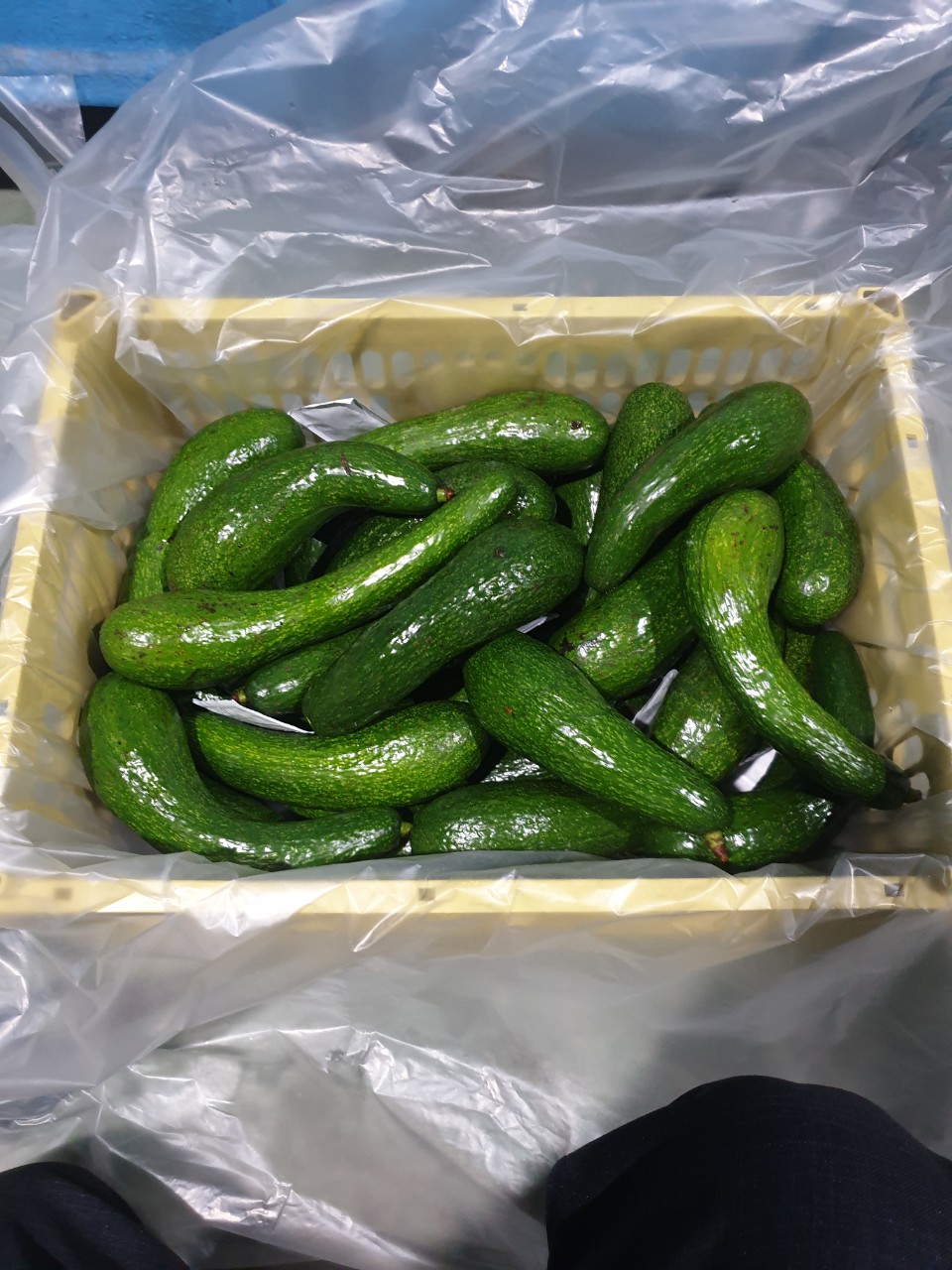
>>> See More: KIF 3D Map Bag Store at Room Temperature <20 °C
Adjusting O2 gas at 2% and CO2 10%, storage temperature 7.2 ° C can double the storage time of Avocado compared with normal storage at low temperature.
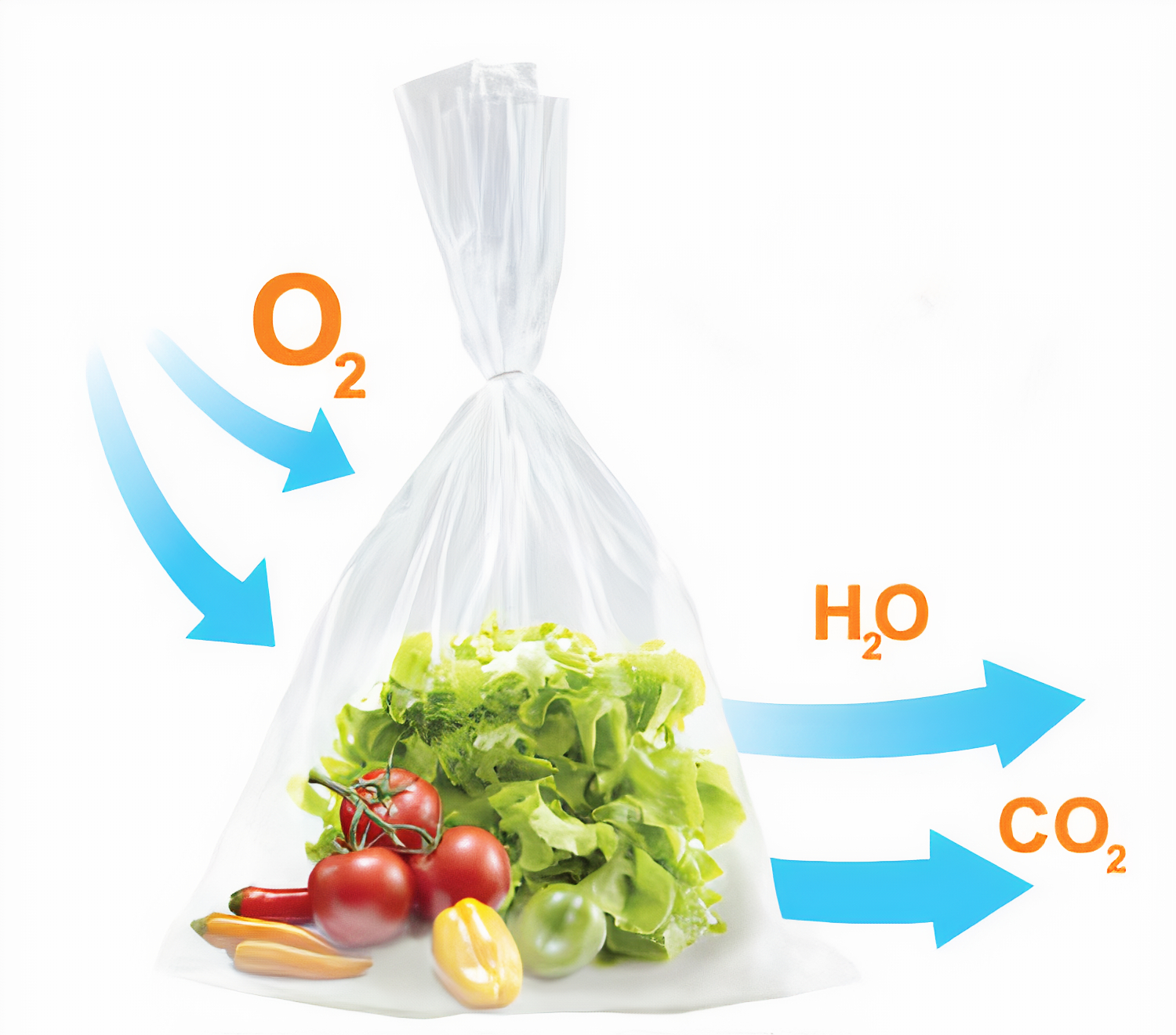
To apply this CA method, you need to invest in a cold storage system and climate change equipment, which is quite expensive (usually used by large-scale businesses).
However, you can still use this CA method at a much cheaper cost, which is to use GreenMap atmospheric transformation bags.
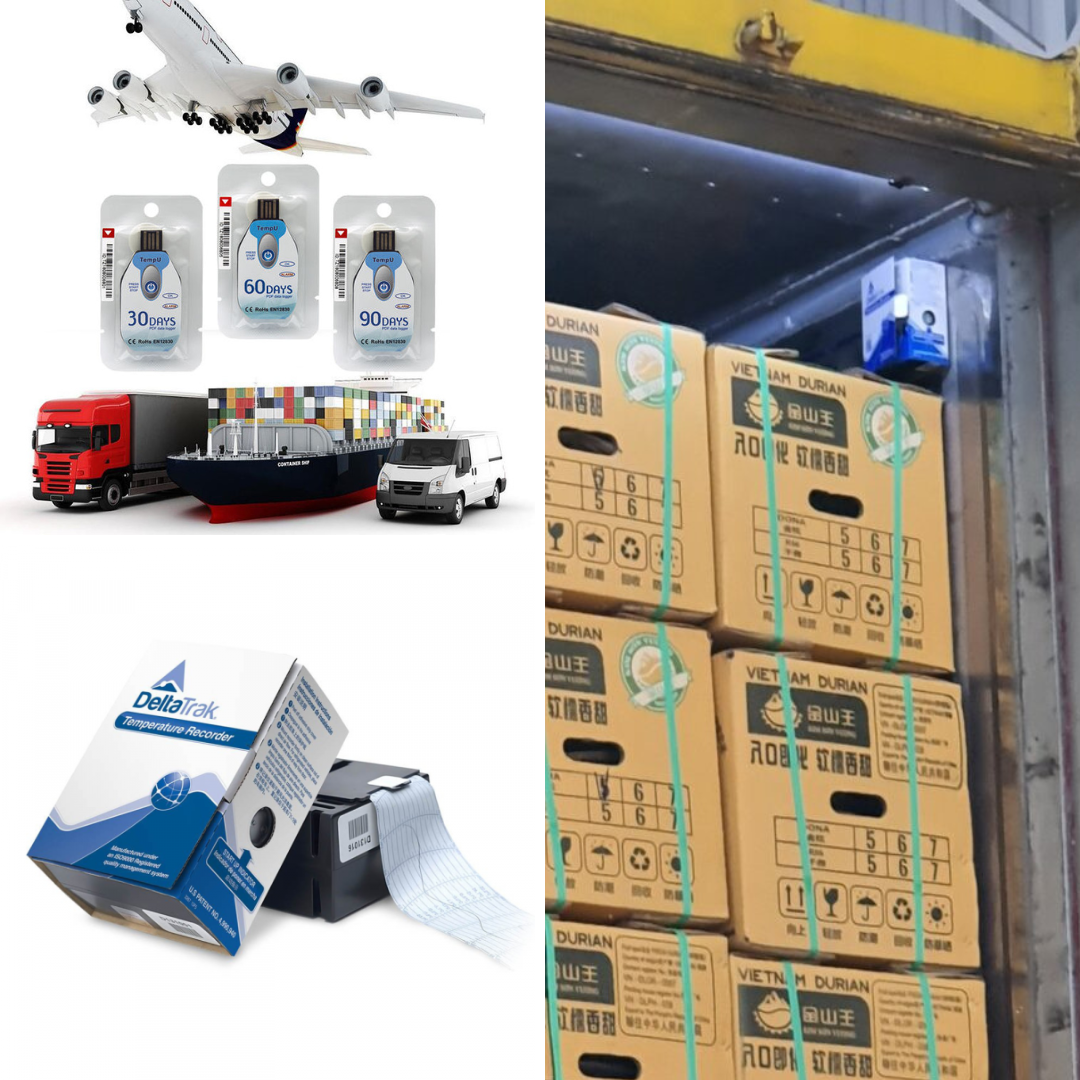
How does the GreenMap Climate Change Bag work?
GreenMAP preserves vegetables and fruits by changing the internal atmosphere, increasing CO2 content and reducing O2 to the equivalent of 3%, causing vegetables and fruits inside to stop respiration, prolonging freshness.
GreenMap bags are certified by the Department of Food Safety and Hygiene (Ministry of Health) to meet quality standards.
Convenient for storing, packaging and preserving avocado on a small scale. Even on a large scale, people still use it because of its convenience.
After washing, the avocados are treated with Natacoat to prevent mold and keep them from turning black. They are then packaged into GreenMap bags and stored in cold storage at a temperature of 5-15 degrees Celsius.
How to Preserve Avocados for Longer Ripening Using Ethylene Absorbers
Using ethylene absorbent packets to preserve avocados is a method to help prolong the ripening time of avocados during storage. Ethylene is a natural gas emitted by fruit to stimulate the ripening process.
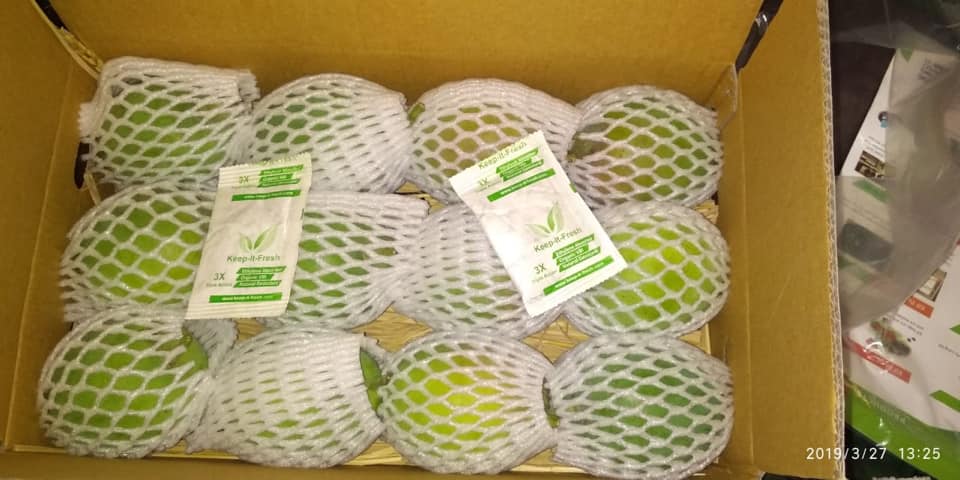
Ethylene absorbers are used to absorb and remove ethylene gas from the air around avocados, slowing down the ripening process and keeping avocados fresher longer in the refrigerator.
To preserve avocados from ripening with ethylene absorbers, you can do the following:
- Wash the avocado and dry the surface.
- Place the avocado in a sealed plastic bag and place the ethylene absorber packet inside the bag, then seal the bag.
- Place the bag containing the butter in the freezer.
- Change ethylene absorber as needed to ensure effectiveness.
How to Store Avocados Long-Term in Retail Stores
Storing avocados in stores is important to ensure product quality and attract customers. Here are some ways to store avocados in stores:
- Store at the right temperature: Avocado should be stored at a temperature of 10-15 degrees Celsius to keep it fresh and of the best quality. Stores should use refrigerators to store avocados.
- Store avocados properly: Avocados should be stored in a paper bag or airtight container to keep them moist and prevent them from drying out. Be aware that leaving avocados out at room temperature for too long can cause them to spoil more quickly.
- Regular inspection: Stores should periodically inspect the avocados to ensure that they are in top condition. If spoiled avocados are found, they should be discarded immediately to avoid affecting the quality of the remaining products.
- Keep avocados away from other fruits: Avocados can be affected by ethylene gas produced by other fruits. Therefore, keep avocados away from other fruits in the refrigerator.
- Store avocados in a suitable location: Place avocados in a visible location with good air exposure to help keep the product fresh for a longer period of time.
These ways to preserve avocados in the store will help keep your products fresh, high quality and more attractive to customers.

>>> See More: Ethephon Safe Fruit Ripening Agent
Summary How to Preserve Avocado for a Long Time?
Avocado Storage Conditions
- Temperature: 5.5°C ~ 14.5°C (Depending on the variety)
- Humidity: 90% to 95%
- Conditioning conditions: O2: 2% ~ 3%, CO2: 4% ~ 10%, C2H4 < 0.02 μl / L ( GreenMap Modified Atmosphere Bag , CA method)
- Disinfectant, antifungal: Natacoat uses Natamycin to inhibit natural fungi effectively and safely.
- Ethylene blocking: AnsiP 1-MCP inhibits ethylene by blocking the avocado’s receptors, preventing it from absorbing or releasing ethylene, slowing down the natural ripening and aging process.
Results of Preserving Avocados Using Modified Atmosphere Bags

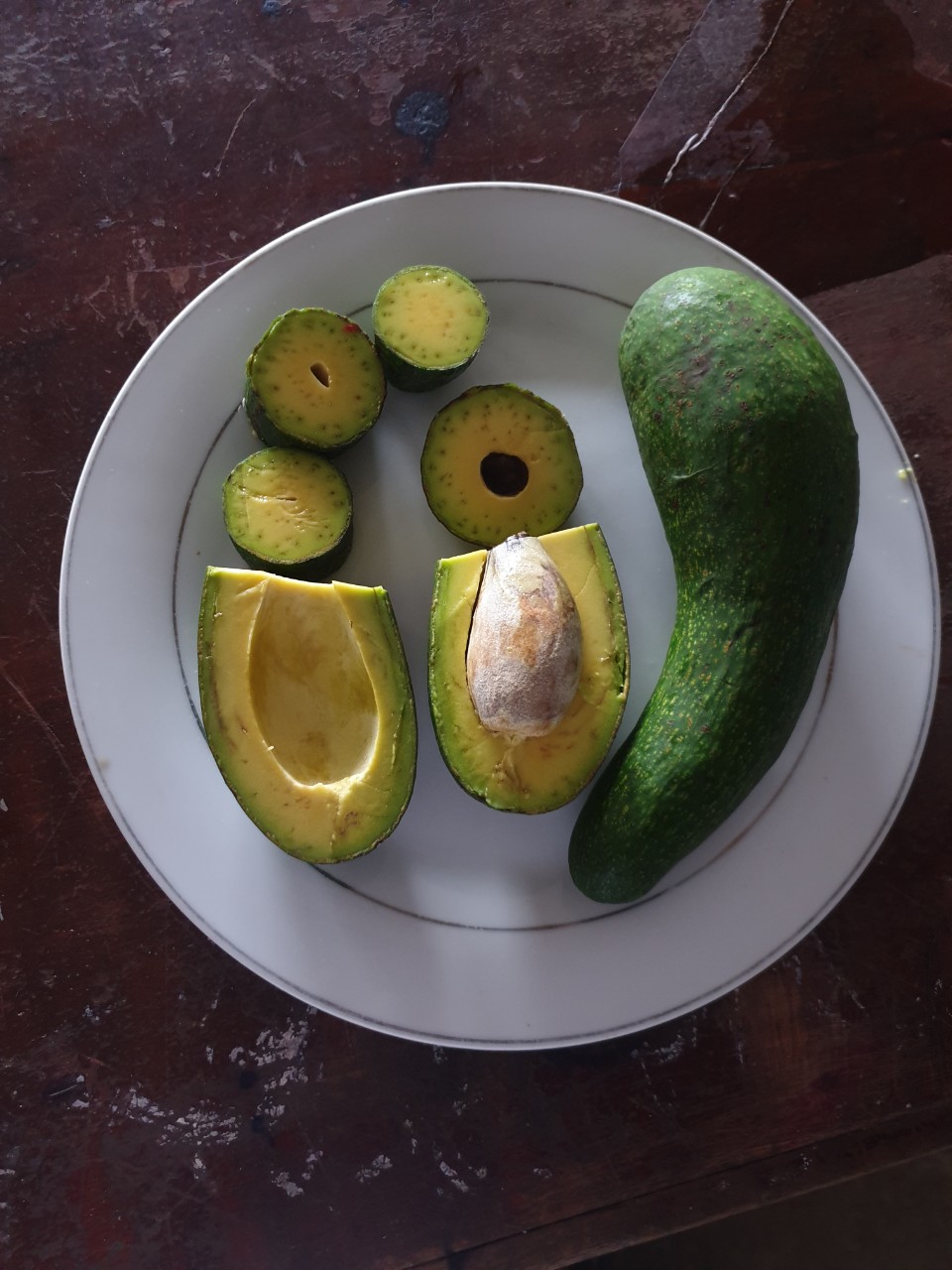
Preservation results of Avocado 034 over 40 days using Greenmap modified bags
Q&A Frequently Asked Questions About Avocado Storage Methods
1. What temperature should avocados be stored at to stay fresh?
Avocados should be stored at temperatures between 5-15 degrees Celsius to maintain freshness and best quality.
2. Is there any way to ripen avocados faster?
You can put the avocado in a paper bag or paper bag with apples, bananas, or pears, because these fruits produce ethylene gas, which helps the avocado ripen faster. Additionally, leaving the avocado in a warm place can also help it ripen faster.
3. How long can ripe avocados be kept in the refrigerator?
Ripe avocados can be stored in the refrigerator for about 3-5 days, but should be kept in a paper bag or airtight container to keep them moist and prevent them from drying out.
4. Should butter be kept at room temperature or in the refrigerator?
If you want to keep your avocado longer, you should keep it in the refrigerator, but if you want it to ripen faster, you can leave it at room temperature. Be aware that leaving it at room temperature for too long can cause it to spoil faster.
5. Should avocados be kept in a paper bag or placed directly on the vegetable rack in the refrigerator?
Avocados should be stored in a paper bag or airtight container to retain moisture and prevent drying out. If stored directly on the produce rack in the refrigerator, they may dry out or be affected by the odors of other vegetables.
6. How do you know if butter has gone bad?
When an avocado goes bad, it will have dark spots on its surface, mold, or a foul odor. In addition, spoiled avocados may also leak water or have rotten areas inside.
7. How to preserve avocado without a refrigerator?
If you don’t have a refrigerator to store avocados, there are a few ways you can do this:
- Store avocados in a cool, dry place: Avocados can be stored in a cool, dry place out of direct sunlight. You can leave the avocados on a table or rack to ripen naturally.
- Store avocado in a sealed paper bag: You can use a paper bag to wrap the avocado and store it in a cool place. The paper bag will help preserve the avocado longer and prevent it from getting scratched.
- Use bran or rice flour to preserve butter: You can put butter in a bowl and sprinkle some bran or rice flour on top. The bran and rice flour will absorb moisture and help preserve butter for a longer time.
- Use cooking oil to preserve avocado: You can dip the avocado tip in cooking oil and leave it in a cool place. Cooking oil will prevent the avocado from drying out and help it last longer.
- Preserving avocados with Map KIF 3D bags : Bags with special properties help keep avocados fresh without the need for a refrigerator, helping to reduce damage during storage, retail display & long-distance transportation.
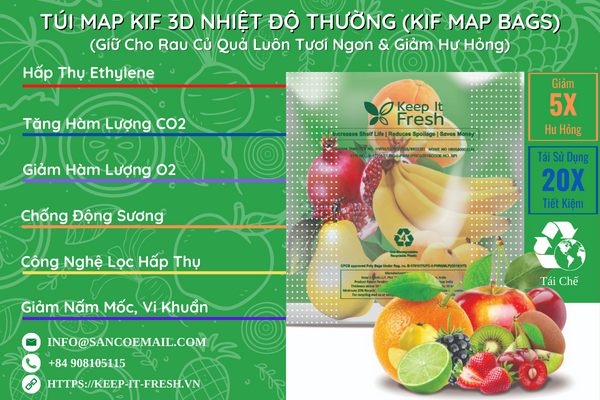
Note: Avocado should be used within the shortest time possible to ensure freshness and safety for health. If the avocado is moldy or has an unpleasant odor, you should throw it away.
8. How to freeze avocado?
To freeze avocado for export, you can follow these steps:
- Choose fresh and good quality avocados to ensure the product freezes evenly and retains the flavor and freshness of the avocado.
- Rinse the avocado with water to remove dirt and impurities on the surface of the avocado.
- Cut the avocado into pieces of uniform size and shape.
- Place the butter in a sealed bag or container.
- Place the bag of avocados in the freezer or the freezer compartment of the refrigerator and seal it.
- Wait about 24 hours for the butter to set.
- Once the butter has frozen, check the sealed bag or container to make sure there is no air or water trapped.
- Labeling and packaging of frozen avocado ready for export.
Note: During freezing, make sure that the temperature of the freezer or refrigerator compartment is low enough (around -18 degrees Celsius) to ensure that the butter freezes evenly and does not spoil.
9. How to keep avocado in the refrigerator from turning black?
To preserve avocado in the refrigerator without it turning black, you can apply the following steps:
- Choose avocados that are evenly ripe, not too soft or underripe.
- Do not wash avocados before storing, as water can cause them to turn black quickly.
- Leave the avocado at room temperature for a few days before refrigerating. This will help it ripen and soften.
- After opening the butter, cover the remaining butter tightly with plastic wrap or foil to prevent water from evaporating from the butter and affecting the surface of the butter.
- Store avocados in the freezer, where the low temperature and cold air keep the avocados from turning black.
If you follow the steps above, your butter will keep well in the refrigerator and not turn black.
See More:
- Top 12 Best Food Preservation Methods Today
- Top 11 Methods of Preserving Fruits and Vegetables After Harvest
- AnsiP 1-MCP Agricultural Product Preservation
- GreenMAP Bags Keep Vegetables And Fruits Fresher And Longer
- How to Preserve Fresh Longan After Harvest for Up to 30 Days
- Ways to Preserve Agricultural Products After Harvest to Export Standards
- The Fastest And Easiest Way To Preserve Fruit In Business?
- Natacoat Anti-Mold Preservation For Fruits And Vegetables
- Detailed Instructions on How to Preserve Oranges Fresh for a Long Time and Safely
- Ethephon Safe Fruit Ripening Agent
- KADOZAN Biological Product (Chitosan Content 2%)
- SUPER FRESH Ethylene Absorbent Bag
- Ethylene Absorber In Cold Storage For Vegetables And Fruits
- Ethylene Absorber KIF Filter Tubes
- How to Preserve Fresh Ginger for a Long Time, Prevent Mold – Ensure Export Standards to the US and Europe
- How to Preserve Fresh Pineapple for Long-distance Export
- HOCl Solution for Preserving Fruits and Food
- How to Preserve Fresh Phalaenopsis Orchids for Long-distance Transport and Export
- Instructions on How to Harvest and Preserve Avocados to Ripen Long Effectively
HOTLINE : 028.73002579 (HCM) – 024.73002579 (Hanoi)
Get advice and order quality, reputable products at:
SAO NAM JOINT STOCK COMPANY (SANCOPACK)
Email : info@vietnamtravelcard.vn.vn
| ✅Avocado storage: | ⭐Ethylene absorption, anti-mold, sterilization, anti-dehydration. |
| ✅Effective: | ⭐Keep fresh for a long time, reduce damage, slow ripening & aging, no blackening. |
| ✅Standard: | ⭕Food safety, US FDA |
| ✅Biological products: | ⭐ Chitosan, 1-MCP, MAP, Natamycin |
| ✅Certification: | ⭐Full quality certification. |



